
AP Chemistry
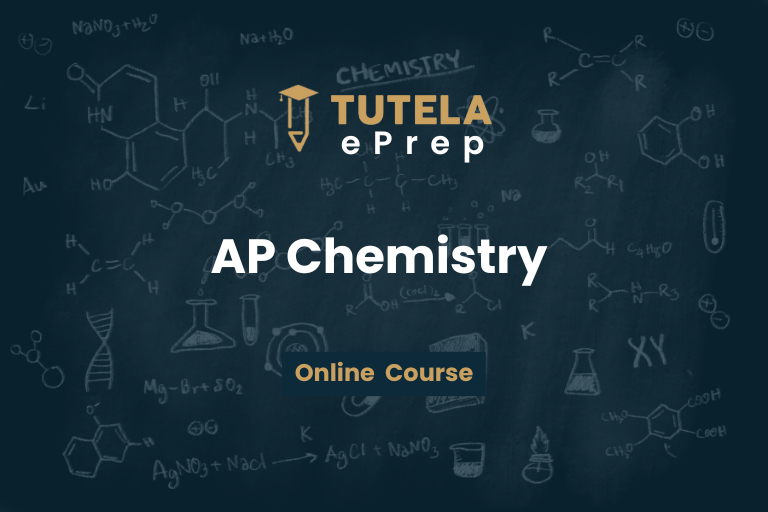
Units
Unit 1: Atomic Structure and Properties
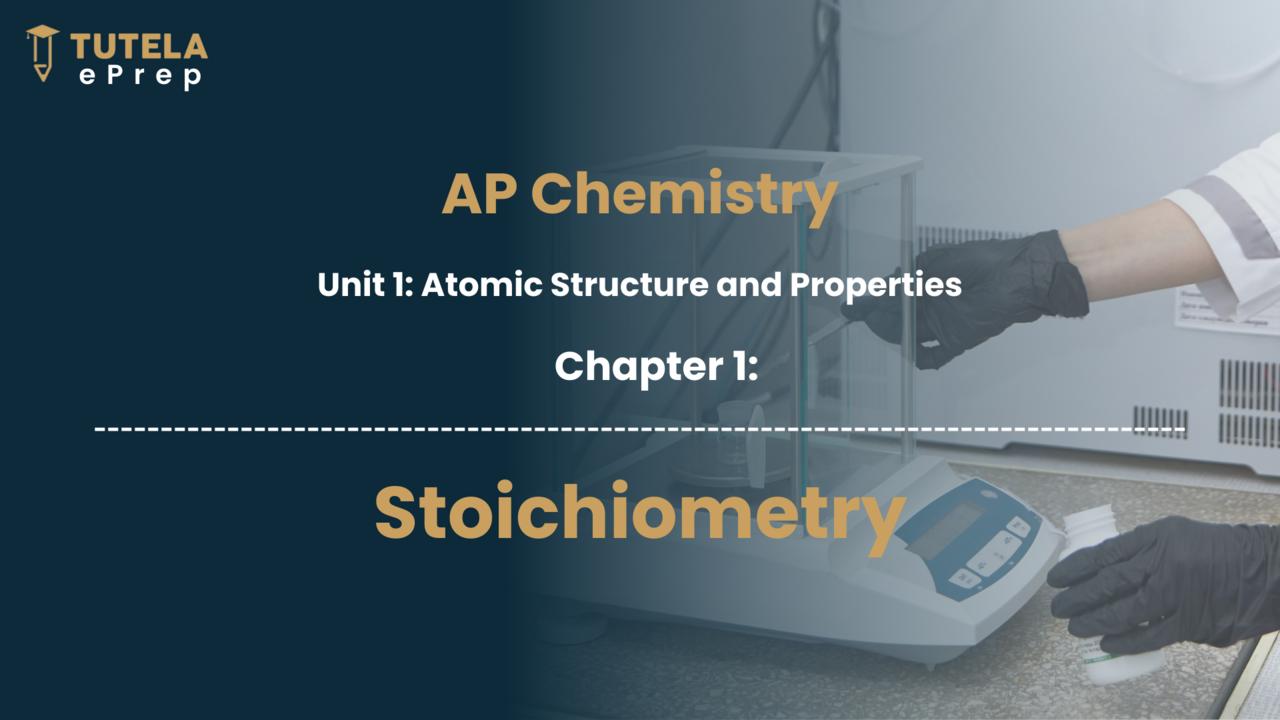
The chapter Stoichiometry focuses on the mole concept, calculations related to product yield, limiting and excess reagents, empirical and molecular formulas, and various concentration terms. It also covers stoichiometry in different contexts, such as hydrates, combustion, and titration.
This Chapter contains a Worksheet
Total no of Questions: 29
MCQ: 25
FRQ: 4

Class Notes

Purchase the course to proceed
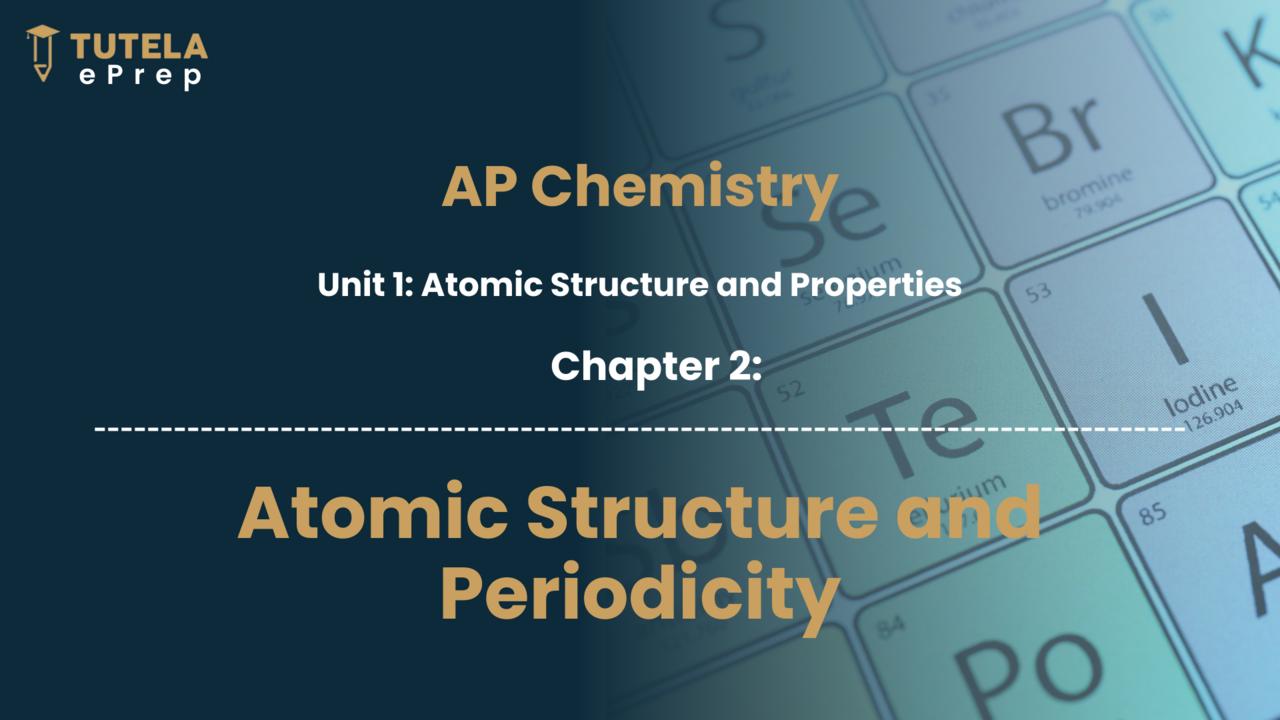
This chapter focuses on atomic structure and periodicity, covering topics like the structure of an atom, quantum numbers, electronic configurations, and periodic trends, including ionization energy, atomic and ionic radii, electron affinity, and electronegativity.
This Chapter contains a Worksheet
Total no of Questions: 20
MCQ: 16
FRQ: 4

Class Notes
Unit 2: Molecular and Ionic Compound Structure and Properties

Purchase the course to proceed
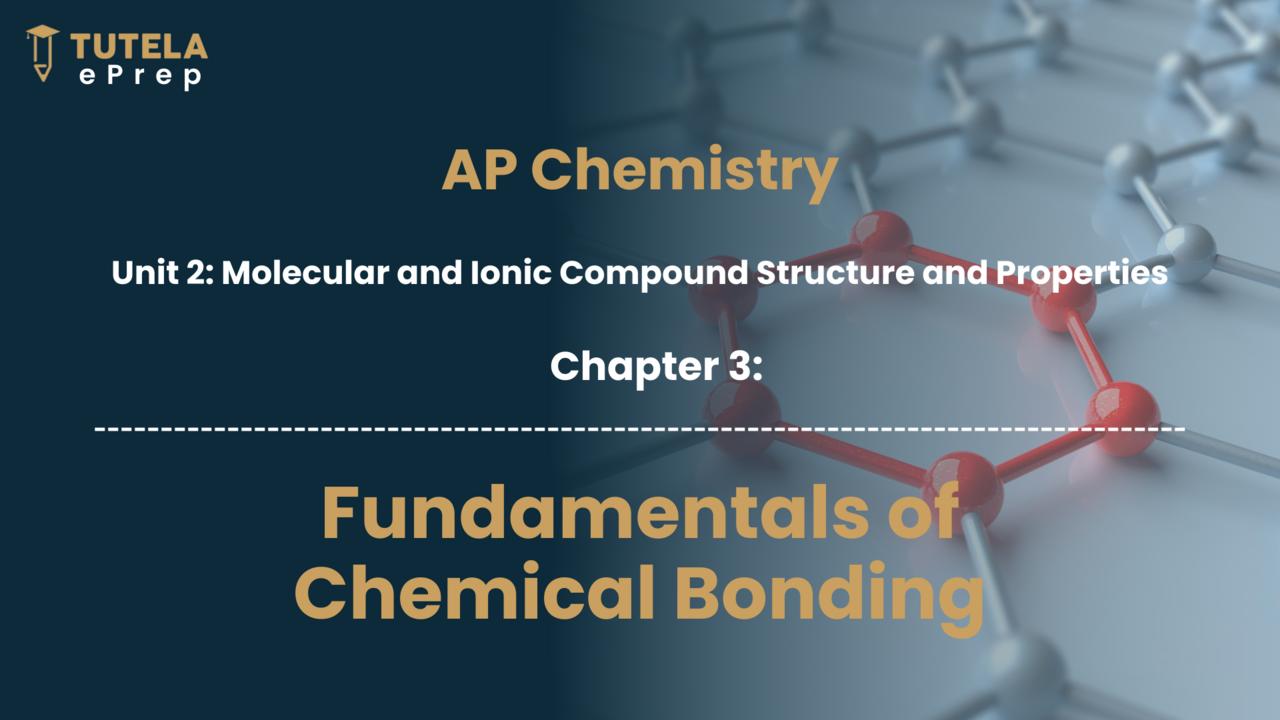
Chemical Bonding covers key concepts such as hybridization, VSEPR Theory, Lewis structures, resonance, types of chemical bonds, intermolecular forces, and the characteristics of polar and nonpolar bonds and compounds.

Class Notes

Purchase the course to proceed
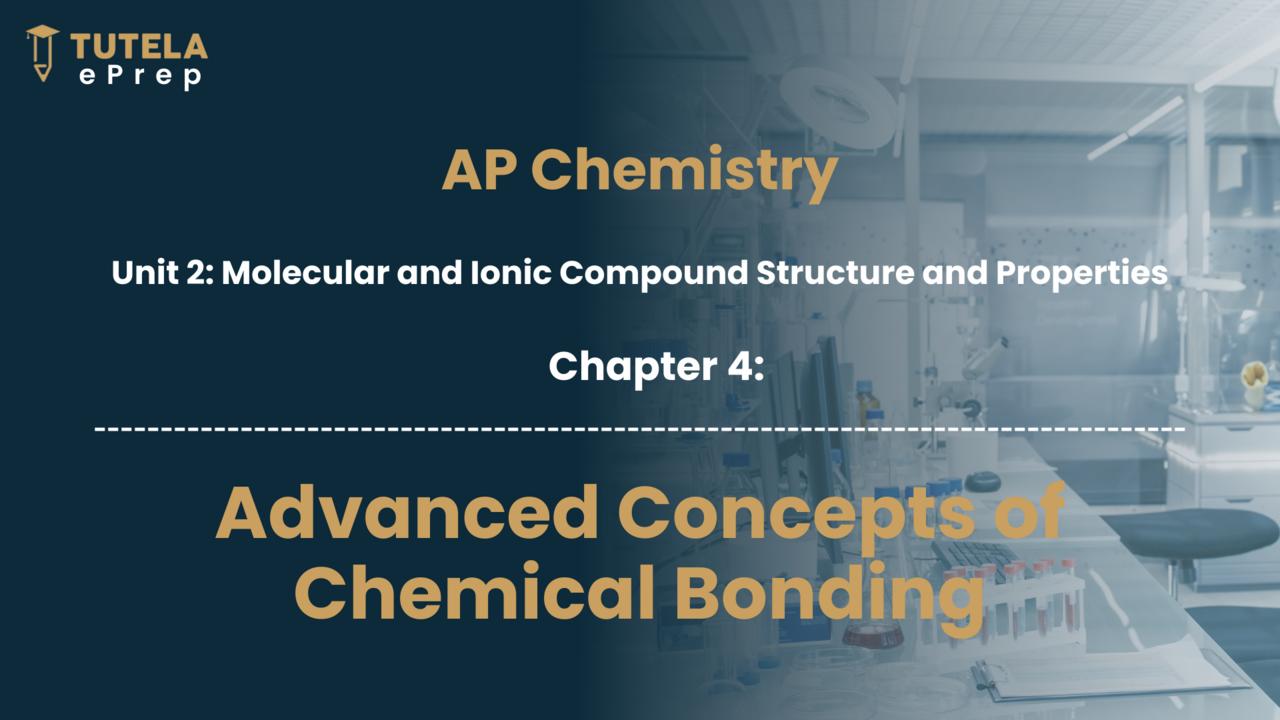
Chemical Bonding covers critical concepts such as hybridization, VSEPR Theory, Lewis structures, resonance, types of chemical bonds, intermolecular forces, and the characteristics of polar and nonpolar bonds and compounds.
This Chapter contains a Worksheet
Total no of Questions: 49
MCQ: 45
FRQ: 4

Class Notes
Unit 3: Intermolecular Forces and Properties

Purchase the course to proceed
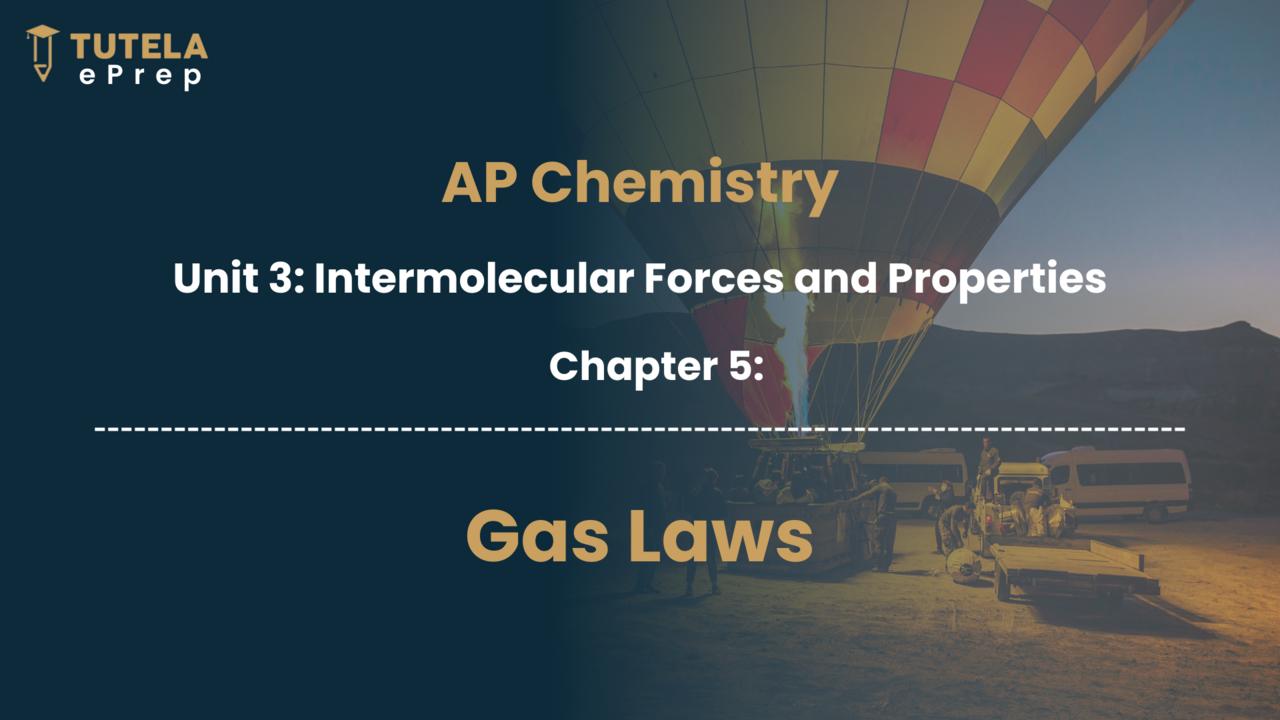
The chapter Gas Laws explains the fundamental principles of gas behavior under different conditions, focusing on Boyle's Law, Charles' Law, Gay Lussac’s Law, Avogadro’s Law, the Combined Gas Law, and concepts like Dalton's Law of Partial Pressures, Graham’s Law of Diffusion, and the Maxwell-Boltzmann distribution. These laws describe the relationships between pressure, volume, temperature, and quantity of gases.
This Chapter contains a Worksheet
Total no of Questions: 32
MCQ: 28
FRQ: 4

Class Notes
Unit 4: Kinetics

Purchase the course to proceed
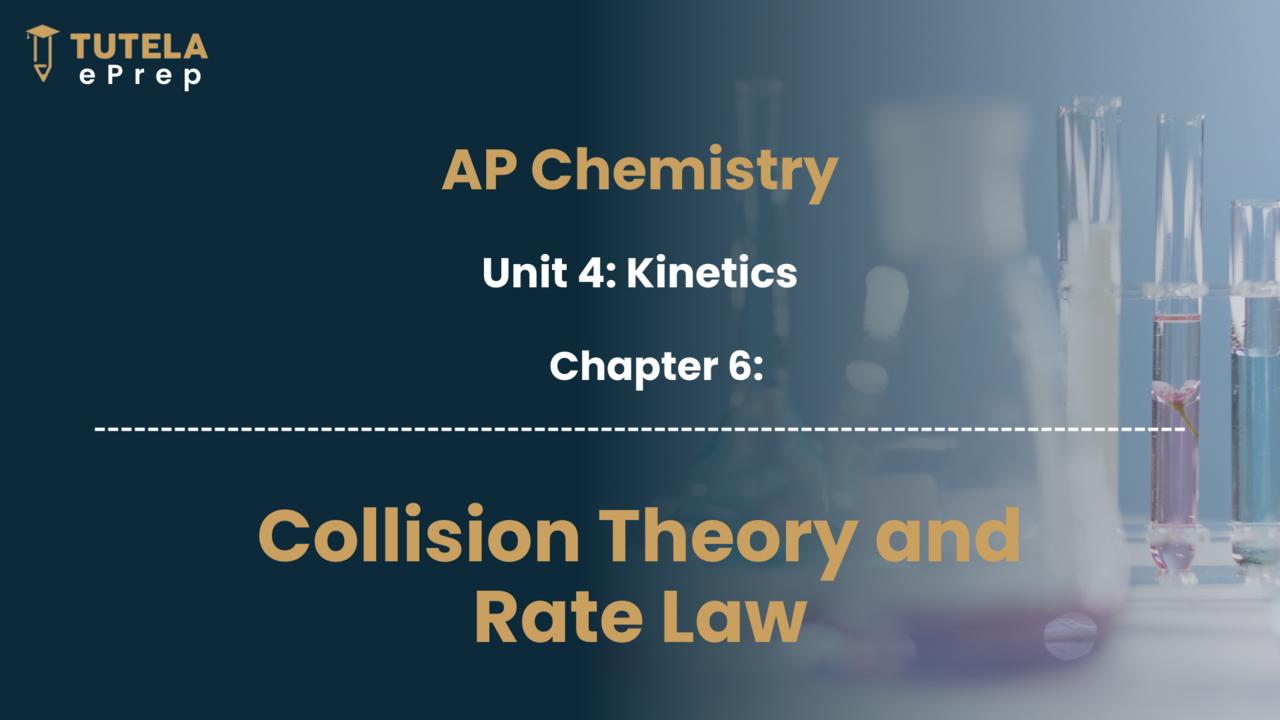
The chapter Collision Theory and Rate Law focuses on the fundamental aspects of chemical kinetics, particularly the collision theory, which explains how and why reactions occur. It also delves into the concept of rate laws, detailing how the rate of a chemical reaction is affected by the concentration of reactants and includes methods for determining the order of a reaction.

Class Notes

Purchase the course to proceed
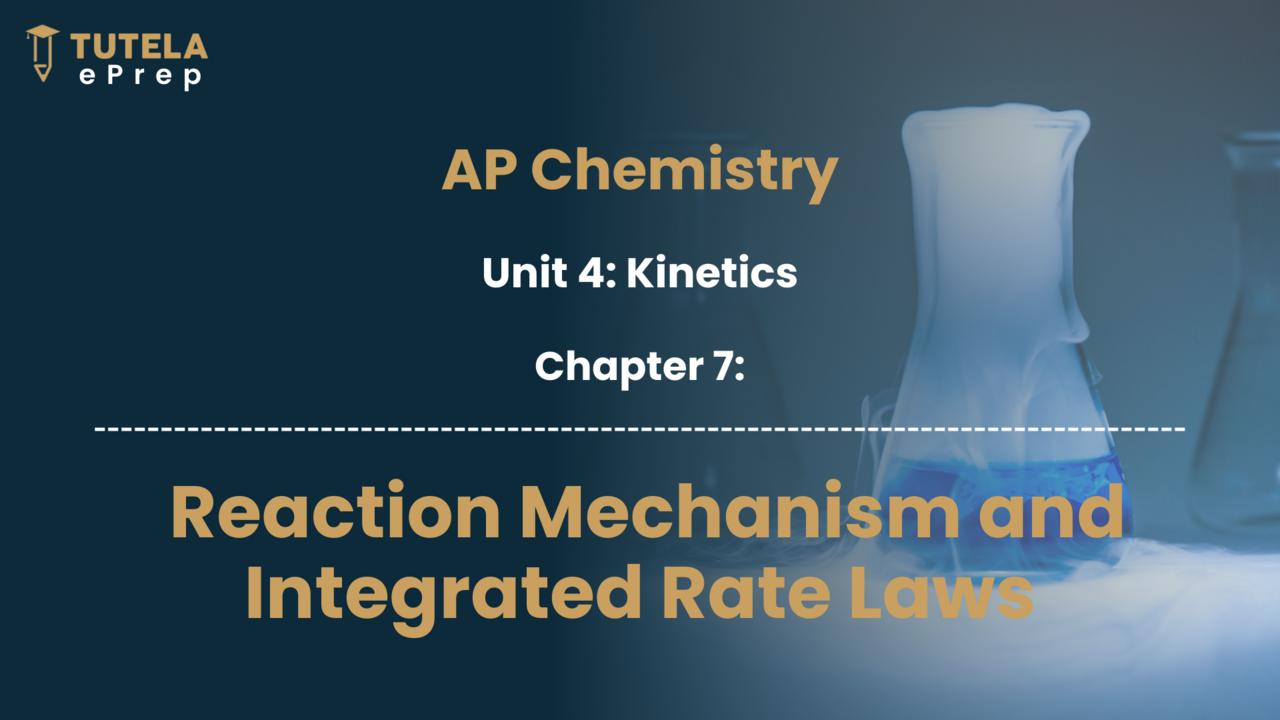
The chapter "Chemical Kinetics" covers the study of reaction rates and factors affecting these rates, including concepts like rate law, order of reaction, collision theory, Maxwell-Boltzmann distribution, activation energy, and catalysts. It also examines reaction mechanisms, multi-step reactions, and integrated rate equations for different orders, providing a comprehensive understanding of how and why chemical reactions occur at specific rates.
This Chapter contains a Worksheet
Total no of Questions: 25
MCQ: 20
FRQ: 5

Class Notes
Unit 5: Thermodynamics

Purchase the course to proceed

The notes on "Thermodynamics" provide an understanding of exothermic and endothermic reactions, energy diagrams, heat transfer, thermal equilibrium, specific heat capacity, calorimetry, enthalpy including bond enthalpies and enthalpy of formation, Hess's Law, entropy, and Gibbs Free Energy. These topics are crucial for analyzing and predicting the heat and energy changes in chemical reactions.
This Chapter contains a Worksheet
Total no of Questions: 32
MCQ: 28
FRQ: 4

Class Notes
Unit 6: Equilibrium

Purchase the course to proceed
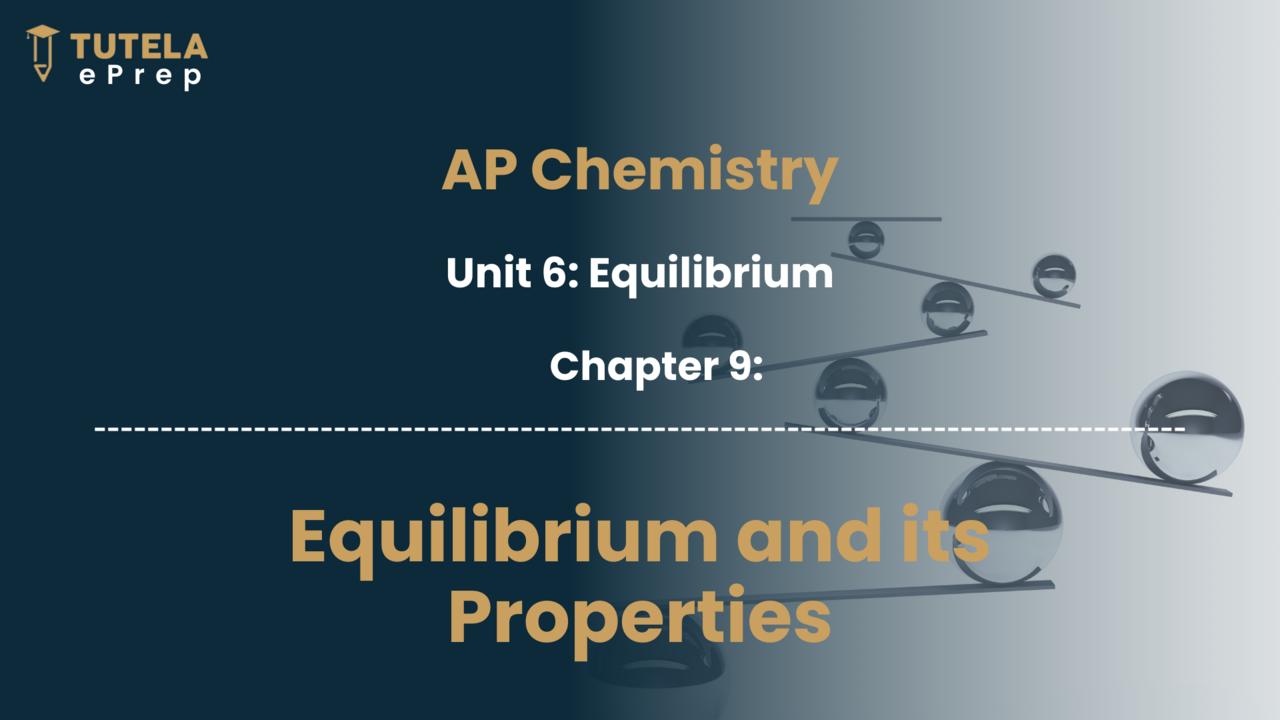
Chemical Equilibrium focuses on the characteristics and dynamics of chemical equilibria, including the equilibrium constant and its properties, the reaction quotient, and Le Chatelier’s Principle, along with how equilibrium is affected by changes in concentration, temperature, pressure, and the addition of catalysts.
This Chapter contains a Worksheet
Total no of Questions: 5
MCQ: 0
FRQ: 5

Class Notes
Unit 7: Acids and Bases

Purchase the course to proceed
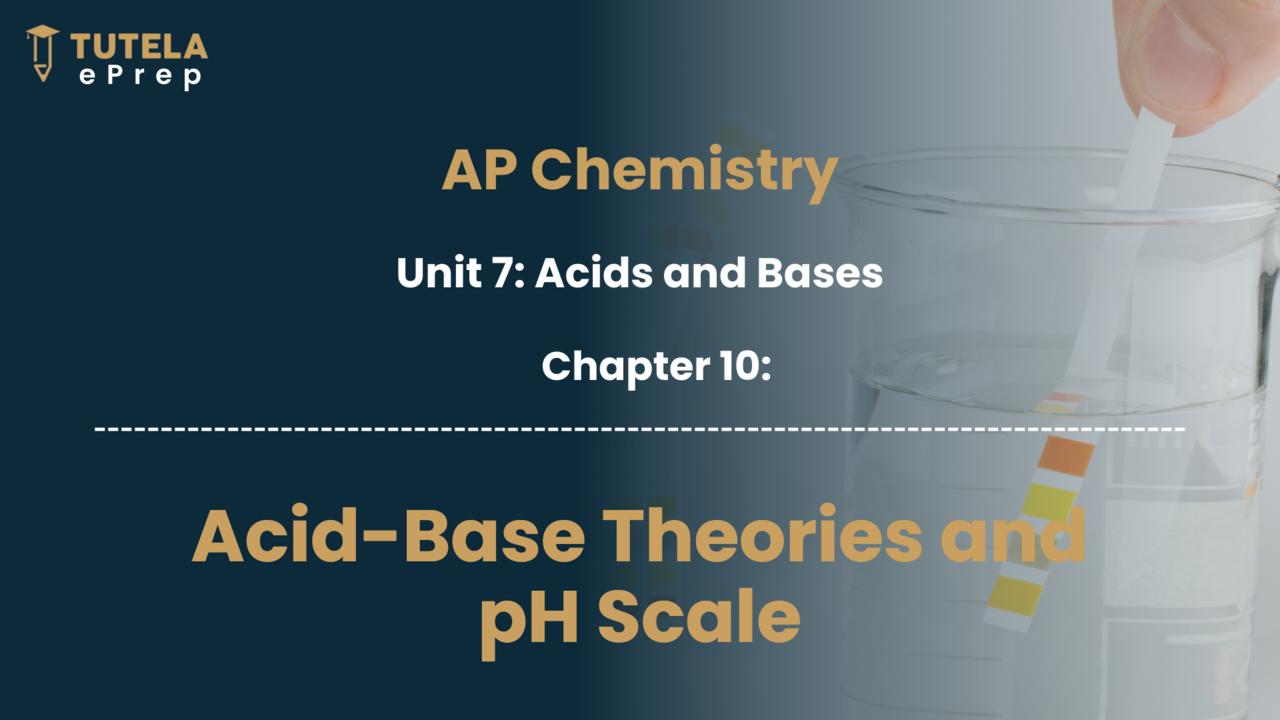
The chapter "Acid-Bases Theories and pH Scale" covers the fundamental theories of acids and bases, including the Arrhenius, Bronsted-Lowry, and Lewis theories. It also delves into the pH scale, explaining how it is used to measure the acidity or basicity of solutions.

Class Notes

Purchase the course to proceed
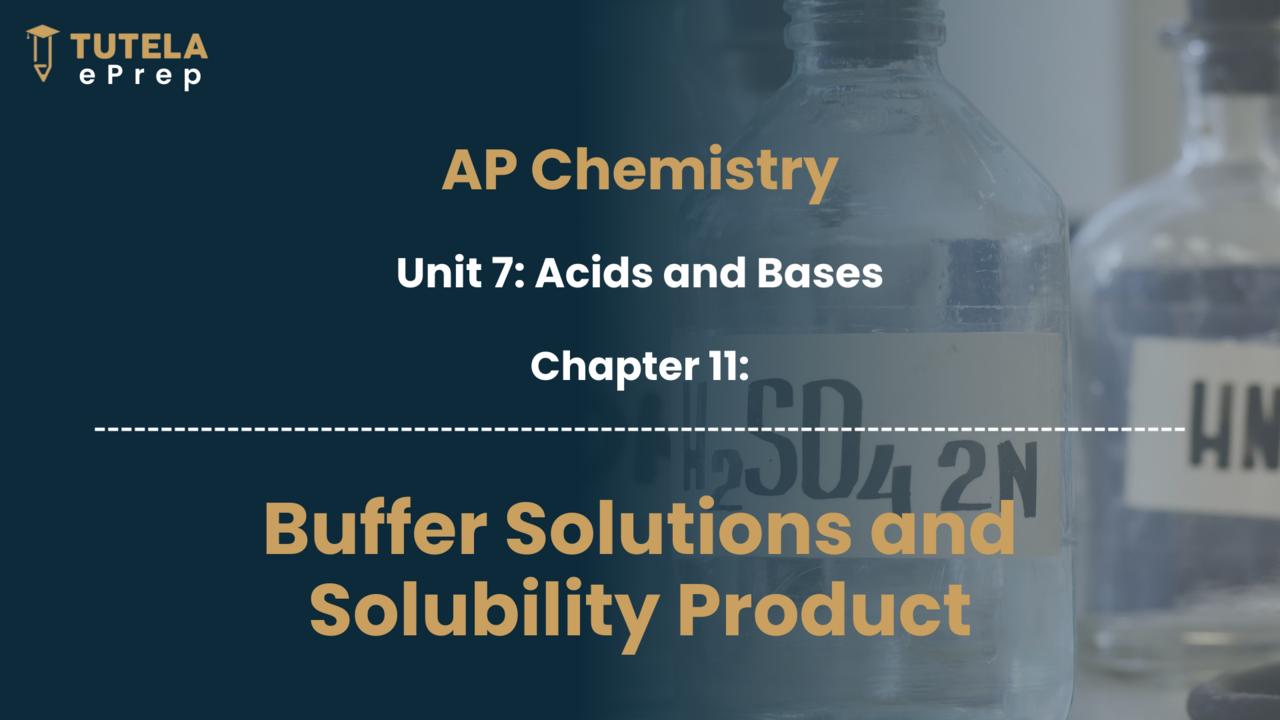
The chapter "Buffer Solution and Solubility Product" primarily teaches the properties and calculations related to buffer solutions, including their preparation and pH calculation, and the solubility product principle, which involves understanding the solubility of sparingly soluble salts and calculating their solubility product constants.

Class Notes

Purchase the course to proceed

The chapter "Common Ion Effect and Titration Curves" explains the common ion effect in the context of solubility and pH. It also discusses different types of titrations (strong acid-strong base, strong acid-weak base, etc.), their equivalence points, and the use of indicators, providing insights into the behavior of solutions during titration.
This Chapter contains a Worksheet
Total no of Questions: 35
MCQ: 31
FRQ: 4

Class Notes
Unit 8: Applications of Thermodynamics

Purchase the course to proceed
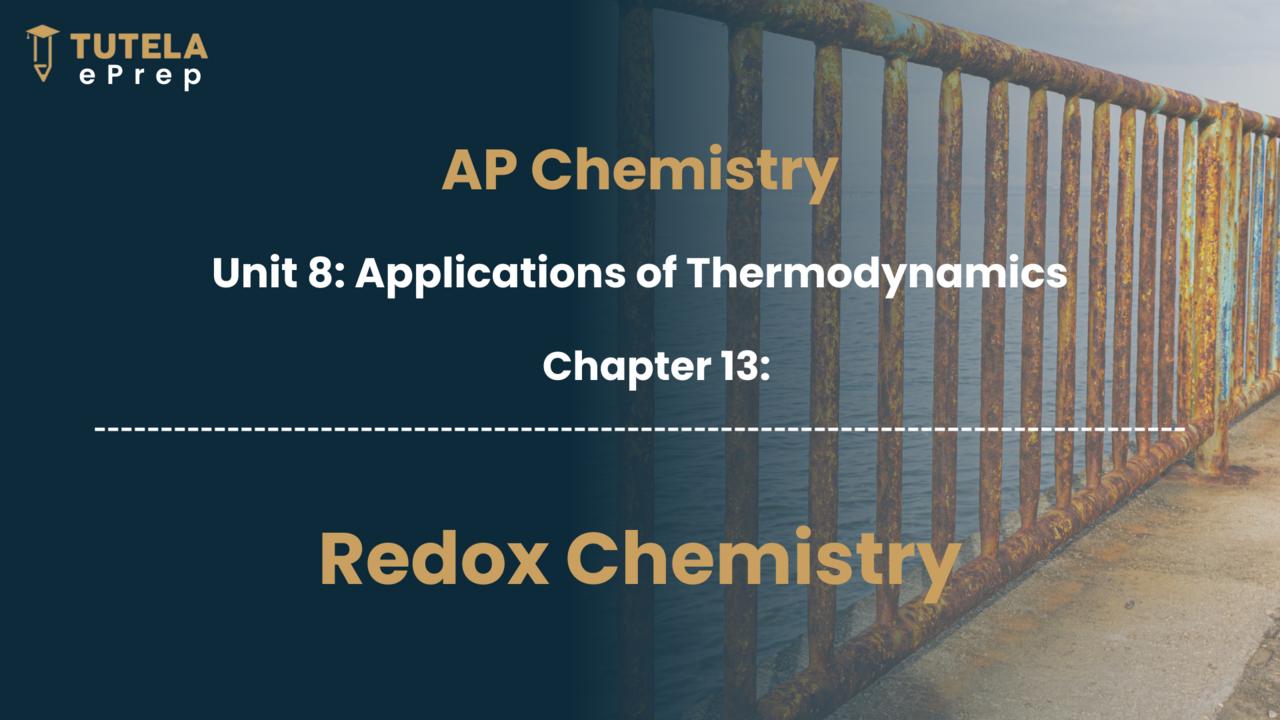
The Chapter Redox Reactions covers the fundamental concepts of oxidation and reduction processes, including the rules for assigning oxidation numbers, balancing redox reactions in acidic and basic mediums, and identifying the agents and species involved in oxidation and reduction.
This Chapter contains a Worksheet
Total no of Questions: 17
MCQ: 17
FRQ: 0

Class Notes

Purchase the course to proceed
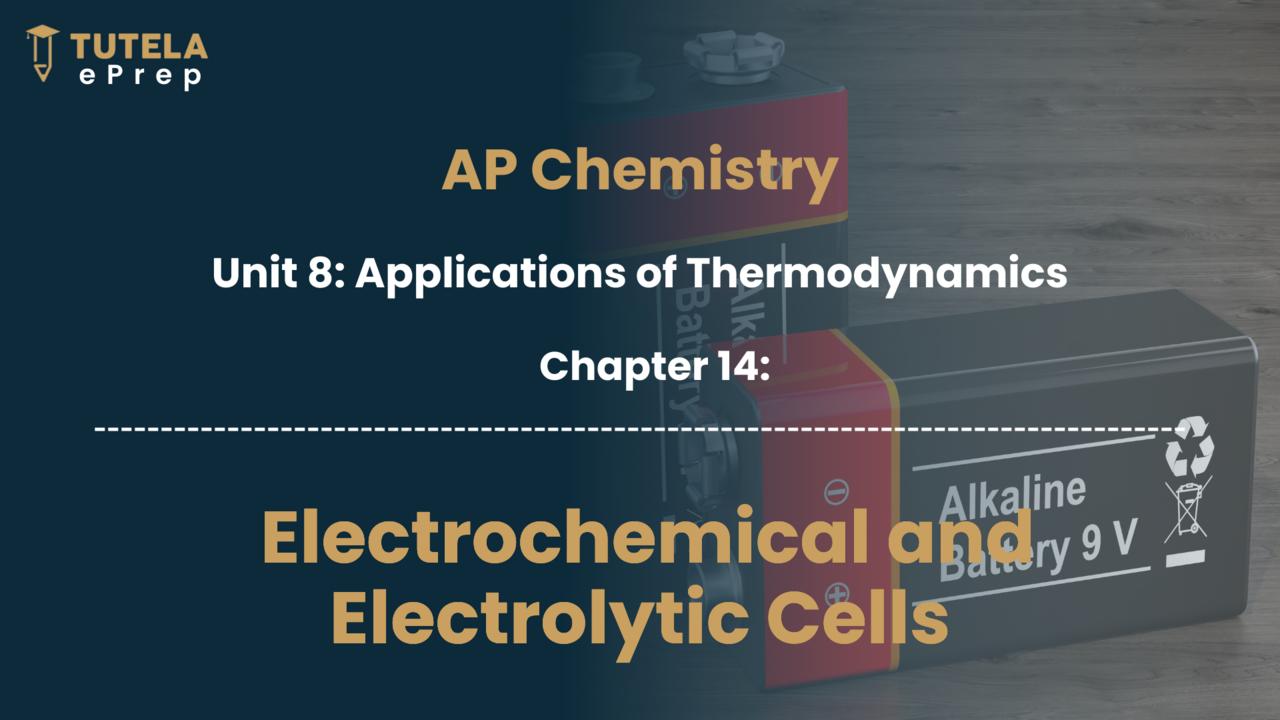
The chapter "Electrochemical and Electrolytic" focuses on the principles and workings of galvanic (voltaic) and electrolytic cells, detailing their construction, half-reactions at anodes and cathodes, and the role of salt bridges. It also covers the Nernst Equation, Faraday’s Laws of electrolysis, and the Electrochemical or Reactivity Series, offering an in-depth understanding of electrochemical processes and their applications.

Class Notes

Purchase the course to proceed
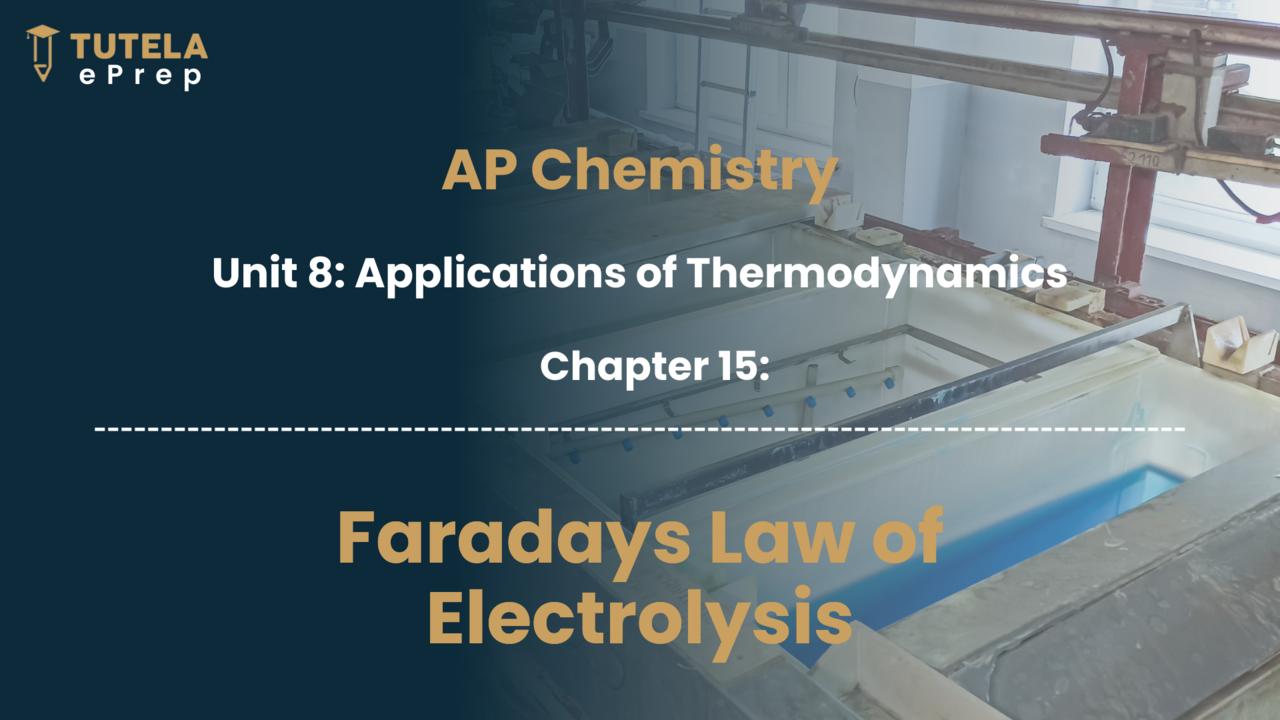
The chapter Faraday's Law of Electrolysis focuses on the quantitative aspects of electrolysis, explaining how the amount of substance deposited or liberated at an electrode is directly proportional to the quantity of electricity passing through it. It includes detailed discussions on electrolysis calculations, the electrochemical equivalent, and examples of electrolysis in different scenarios.
This Chapter contains a Worksheet
Total no of Questions: 30
MCQ: 25
FRQ: 5

Class Notes
FLT 1: AP Chemistry FLT-1

Purchase the course to proceed
Section I
Multiple Choice Questions
Duration: 90mins
Total Questions: 50
Section II
Free Response Questions
Duration: 60mins
Total Questions: 7
FLT 2: AP Chemistry FLT-2

Purchase the course to proceed
Section I
Multiple Choice Questions
Duration: 90mins
Total Questions: 50
Section II
Free-Response
Duration: 90mins
Total Questions: 7
FLT 3: AP Chemistry FLT-3

Purchase the course to proceed
Section I
Multiple Choice Questions
Duration: 90mins
Total Questions: 50
Section II
Section II: Free-Response
Duration: 90mins
Total Questions: 7
FLT 4: AP Chemistry FLT- 4

Purchase the course to proceed
Section I
Multiple Choice Questions
Duration: 90mins
Total Questions: 50
Section II
Section II: Free-Response
Duration: 90mins
Total Questions: 7